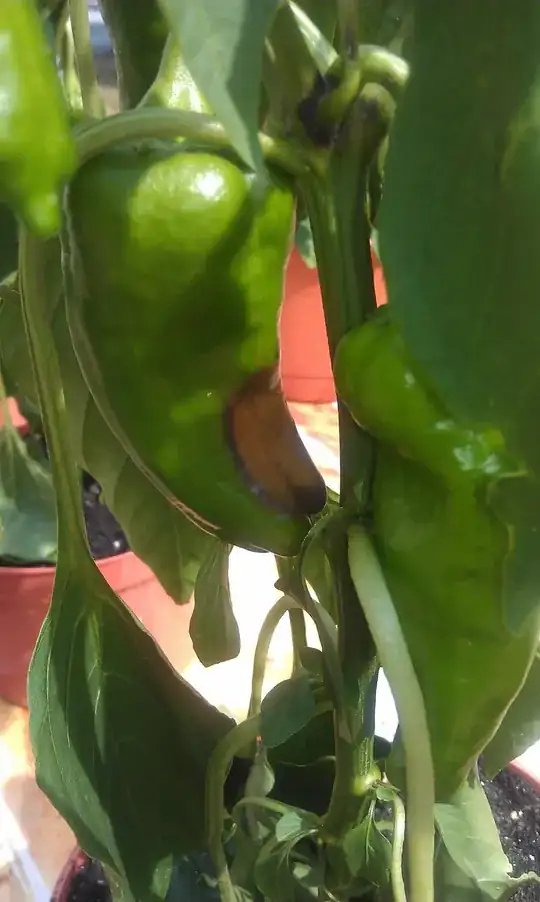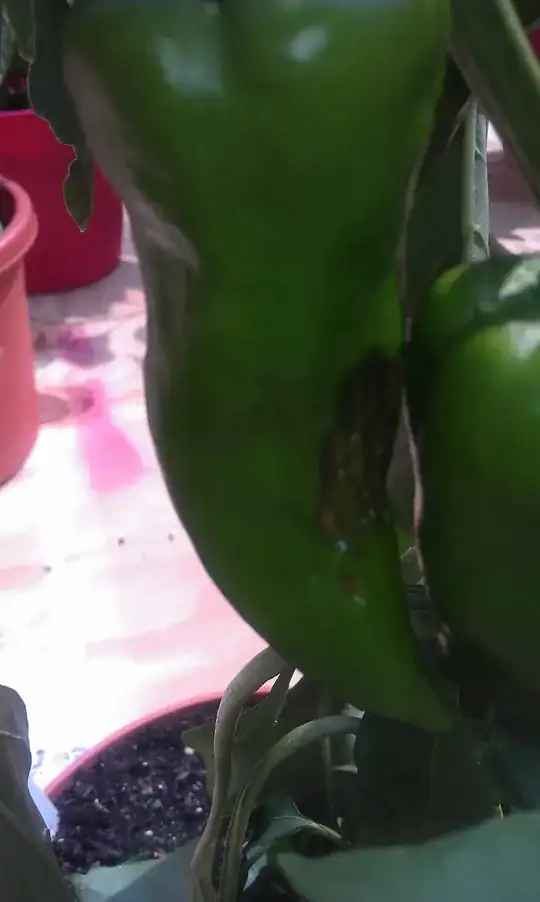I would have said Blossom End Rot because that seems to be the most rot along these lines., and especially as you have it on a few of the larger fruit. It is caused by a Calcium deficiency. Check your MiracleGro - it is probably almost all NPK but might have Calcium in smaller quantities. Is that enough? I don't know.
Usually the problem occurs more due to a mobility problem with the Calcium when watering is erratic - yes the plant might get water, but it might go a couple of days without water and then get it all at once. I have seen this and is probably hard to avoid with modern drought restrictions.
Ohio State have a Blossom End Rot Fact Sheet that is worth reading. As well as lack of Ca in the soil, and erratic watering, they mention "competitive cations". What they mean is the pepper plant is absorbing similar ions to Calcium instead of Calcium - and then has a lack of calcium in the fruit. They mention ammonium specifically, but magnesium is probably a candidate (it is common, and is chemically very similar). Check your MiracleGro - if it is ammonium based, them this could be your cause. OSU's recommendations are:
Maintain the soil pH around 6.5. Liming will supply calcium and will increase the ratio of calcium ions to other competitive ions in
the soil.
Use nitrate nitrogen as the fertilizer nitrogen source. Ammoniacal nitrogen may increase blossom-end rot as excess ammonium ions reduce
calcium uptake. Avoid over-fertilization as side dressings during
early fruiting, especially with ammoniacal forms of nitrogen.
Avoid drought stress and wide fluctuations in soil moisture by using mulches and/or irrigation. Plants generally need about one inch
of moisture per week from rain or irrigation for proper growth and
development.
Foliar applications of calcium, which are often advocated, are of little value because of poor absorption and movement to fruit where it
is needed.
When I've seen it, watering has been the main issue during drought conditions. Rot has not been too widespread. Pick the fruit before the rot gets too big. You can still eat it - just cut the rot off. If you wait too long, the rot will spread (secondary infections have taken over) and there's nothing worth saving.

